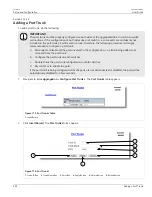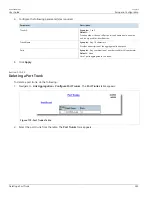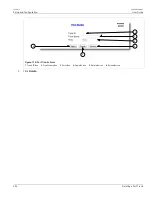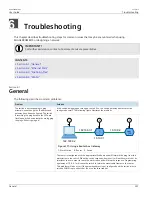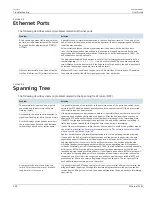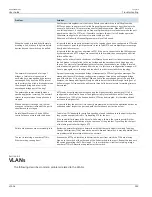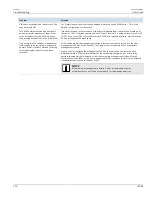
Chapter 5
Setup and Configuration
RUGGEDCOM ROS
User Guide
242
Rules and Limitations
•
Section 5.10.1.2, “Link Aggregation and Layer 2 Features”
•
Section 5.10.1.3, “Link Aggregation and Physical Layer Features”
Section 5.10.1.1
Rules and Limitations
The implementation of link aggregation must adhere to the following rules and limitations:
• Each port can belong to only one port trunk at a time.
• A port mirroring target port can not be member of a port trunk. However, a port mirroring source port can be
member of a port trunk.
• If only one QinQ port is supported by the switch, the port working in QinQ mode cannot be a secondary
member of a port trunk.
• DHCP Relay Agent Client port cannot be a member of a port trunk.
• Load balancing between the links of a bundle is randomized and may not be ideal. For instance, if three 100
Mbs links are aggregated, the resulting bandwidth of the port trunk may not be precisely 300 Mbs.
• A Static MAC Address should not be configured to reside on an aggregated port – it may cause some frames
destined for that address to be dropped.
• A secure port cannot be a member of a port trunk.
• The IEEE 802.3ad Link Aggregation standard requires all physical links in the port trunk to run at the same speed
and in full-duplex mode. If this requirement is violated, the performance of the port trunk will drop.
The switch will raise an appropriate alarm, if such a speed/duplex mismatch is detected.
• STP dynamically calculates the path cost of the port trunk based on its aggregated bandwidth. However, if the
aggregated ports are running at different speeds, the path cost may not be calculated correctly.
• Enabling STP is the best way for handling link redundancy in switch-to-switch connections composed of more
than one physical link. If STP is enabled and increased bandwidth is not required, Link Aggregation should not
be used because it may lead to a longer fail-over time.
Section 5.10.1.2
Link Aggregation and Layer 2 Features
Layer 2 features (e.g. STP, VLAN, CoS, Multicast Filtering) treat a port trunk as a single link.
• If the Spanning Tree Protocol (STP) puts an aggregated port in blocking/forwarding, it does it for the whole port
trunk.
• If one of the aggregated ports joins/leaves a multicast group (e.g. via IGMP or GMRP), all other ports in the trunk
will join/leave too.
• Any port configuration parameter (e.g. VLAN, CoS) change will be automatically applied to all ports in the trunk.
• Configuration/status parameters of the secondary ports will not be shown and their port numbers will be simply
listed next to the primary port number in the appropriate configuration/status UI sessions.
• When a secondary port is added to a port trunk, it inherits all the configuration settings of the primary port.
When this secondary port is removed from the port trunk, the settings it had previous to the aggregation are
restored.

















